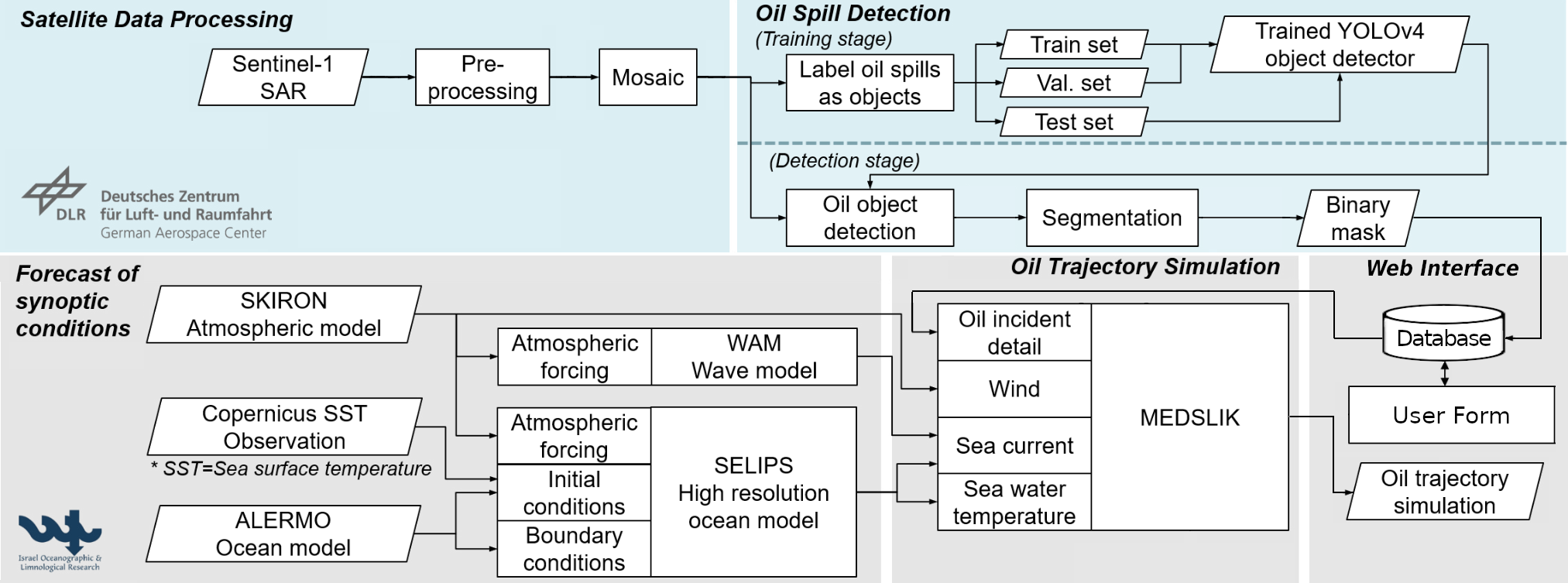|
With wide coverage and the capability of monitoring at night and during cloudy weather,
Synthetic Aperture Radar (SAR) is suitable for setting up an oil spill early warning system.
However, many other phenomena appear as dark formations in SAR, which are so-called ‘look-alikes’ issues,
and make it challenging to distinguish themselves from oil spills.
In the general procedure of detecting oil spills from the previous studies, all the dark formations in the images are segmented,
and their features are extracted for classifying whether they are oil spills or look-alikes. However,
the segmentation separates the dark formations from their surrounding areas and, at the same time, discards the information of how
they are different from their surroundings. Therefore, we invented a different approach for automated detection of oil spills in
this project. Oil spills in SAR images are directly detected and defined with bounding boxes by an object detector, which was
trained on a large manual inspected oil spills dataset. The exact areas covered by oil spills are then obtained from the
segmentation method.
Most of the previous studies for oil spill detection focused on large oil spill events. However, for an operational service,
targeting smaller oil spills is also important as they occur regularly in this area. With the system built in this project,
the detections are not limited to large oil spills. Oil spills could be detected as long as there are oil spills with similar
patterns or features in the training dataset. During the project, a training dataset of 9768 manually detected oil spills was
created from SAR images of the southeastern Levantine in 2015–2018.
This dataset was used to train the YOLOv4 object detector.
Usually, oil spill detection requires a lot of human work on manual inspection.
An automated oil spill detection system can provide detected oil spills for the manual inspector to confirm, in this way,
the total time on human work can be reduced.
Detections are automatically sent to ISRAMAR system to create a forward trajectory forecast in a dedicated interface. The service is currently in testing and is restricted. Some screenshots are available here.

schme of the joint oil detection and forecasting system
|